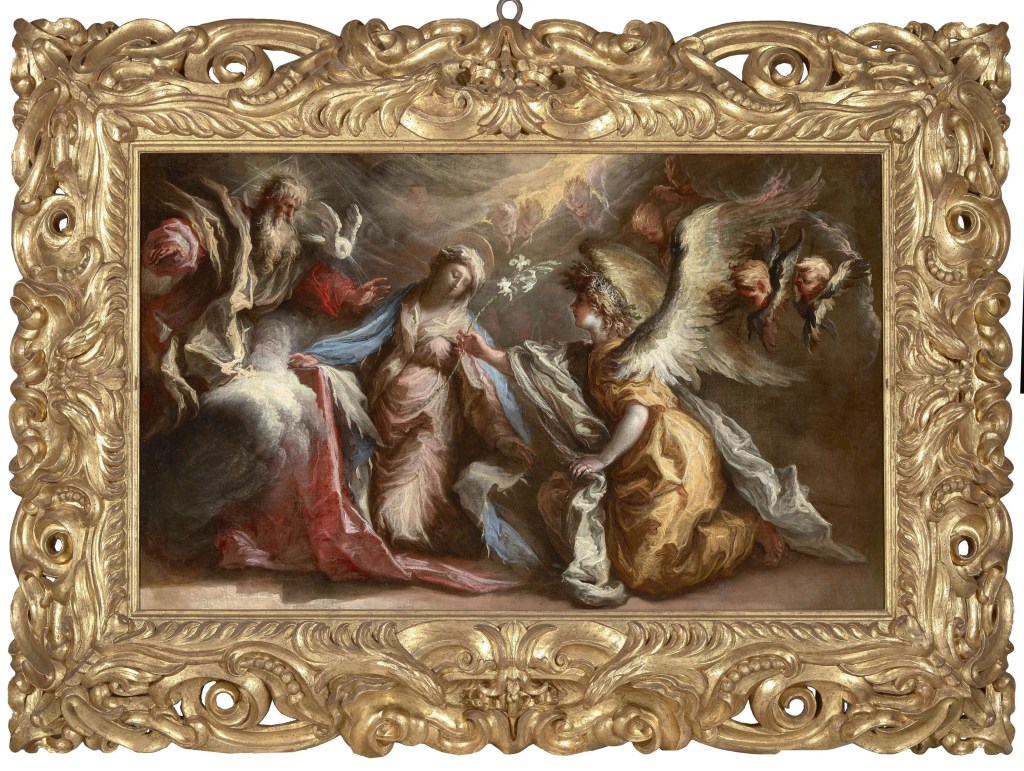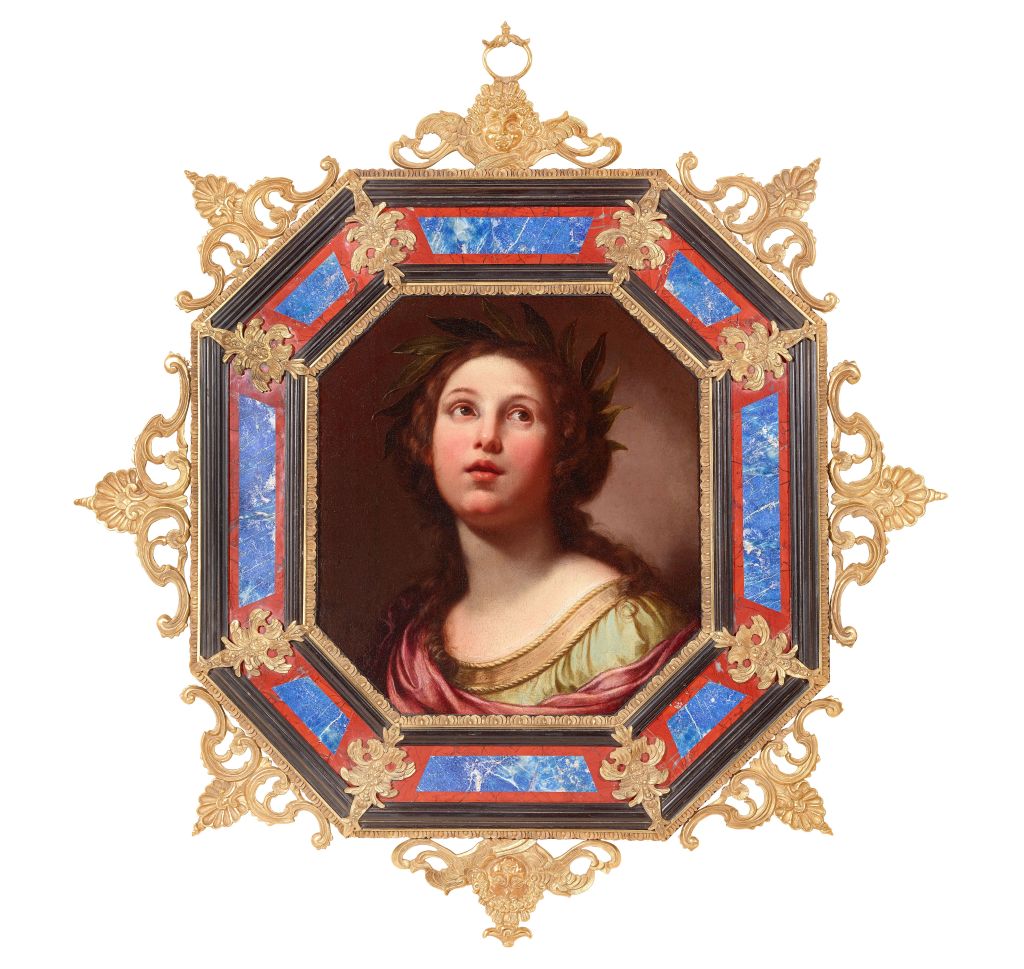
MNAHA, Tom Lucas

Audio By Carbonatix
When Sir Mark Fehrs Haukohl and his brothers were growing up, their parents often took them to art galleries and museums to teach them about art. On one trip, when the brothers were aged around 10 to 12 years old, their parents told them they could each pick whatever piece they wanted for their bedrooms.
“So my older brother picked a great watercolor from Audubon,” Haukohl recalls. “I picked three heads by Otto Dix and my little brother picked an Old Master painting.” And so the young boys became part of their family’s tradition of collecting original works by major artists, a tradition that began with Haukohl’s great-grandfather, who came to the U.S. from Germany in 1836, and has now been upheld for six generations.
Haukohl later developed his interest in the Old Masters (the great painters of Europe from roughly the Renaissance of the 15th century through the beginning of the Romantic period in the late 18th century), with a particular focus on collecting works from the Baroque period in Florence (the 17th and early 18th centuries). Over the last 40 years, Haukohl has acquired what is now the largest and most important private collection of Florentine Baroque art outside Italy.
More than 30 works selected from the collection comprise the ongoing “Florentine Baroque: The Haukohl Collection” exhibit at Phoenix Art Museum, which opened in late August.
This year, make your gift count –
Invest in local news that matters.
Our work is funded by readers like you who make voluntary gifts because they value our work and want to see it continue. Make a contribution today to help us reach our $30,000 goal!
The show comes to Phoenix as part of a larger tour; it’s “traveled to 15 different university art museums before coming to Phoenix,” says Rachel Sadvary Zebro, Phoenix Art Museum associate curator of collections. In the last two years, the exhibit has been to Ball State University in Indiana, Rollins College in Orlando and the University of Georgia, among other institutions.
“Education is important for us, and it’s the key thing of the Haukohl Philanthropies,” Haukohl says. “We try to identify underserved communities, communities where we can interface with a lot of students and also museums that do not have a large Italian Old Master painting collection.”
One of the major educational events in Phoenix will take place on Jan. 28, when Dr. Davide Gasparotto, senior curator of paintings at the Getty Museum in Los Angeles, will give a presentation on the frames of Florence’s Baroque period.

MNAHA, Tom Lucas
In the Phoenix exhibit, most of the works are grouped by theme into three sections: Faith, Strength, and Courage; Sacred Beauty, Fierce Devotion; and Allegories, Gods, and Heroes. The show also includes a handful of works that fall outside these categories, among them a mural depicting the Bargello Palazzo (based on a 19th-century drawing made shortly after the palace was made a national museum); stucco reliefs of prominent Florentines (including Machiavelli, Galileo and Michelangelo); and an oil-on-canvas portrait of a member of the powerful Medici family.
The first of these thematic groups includes works depicting Biblical stories, including Judith beheading Holofernes (from the apocryphal Book of Judith); God rebuking Cain for murdering his brother; Salome with the head of John the Baptist; and Mary with the infant Jesus (featured in more than one painting). Some paintings in this thematic group, such as Alessandro Gherardini’s painting of the Annunciation (the angel Gabriel’s announcement to Mary that she would give birth to Jesus), are dense with symbolic imagery; the gallery’s placards provide helpful information to guide the viewer.
The Sacred Beauty, Fierce Devotion group includes paintings of Roman Catholic saints. These pieces, as the placards explain, continue the centuries-long tradition in European art of depicting saints (often with their associated motifs) while evolving the subject by the inclusion of more focus on the saints’ humanity.
Works in this group include Giovanni Battista Vanni’s painting “Saint John the Baptist in the Wilderness” (shown with a lamb and a palm-bearing cherub) and Jacopo Giorgi’s “Penitent Magdalene” (showing Mary Magdalene with motifs representing her presence at the Crucifixion of Christ and repentance) and two paintings of Saint Sebastian (both paintings featuring arrows to represent his martyrdom).

MNAHA, Tom Lucas
The third thematic grouping of Allegories, Gods, and Heroes, comprises sculpture and painting depicting figures from Greco-Roman mythology as well as stock characters from the commedia dell’arte (a form of comic theater).
Paintings by Ottavio Vannini, Felice Ficherell and Cesare Dandini depict personifications of meditation, poetry and musical respectively. Harlequin and Pierrot, clown-like characters from the commedia dell’arte, feature in paintings by Giovanni Domenico Ferretti and Narcisse Virgile Díaz de la Peña. One of the exhibit’s two statues depicts a wing-footed Mercury holding his caduceus.
There is something of a fourth theme running through the other three designated groupings: the empowerment of women. There is the Biblical Judith (who beheads the Assyrian general Holofernes to save the Israelites) in Onorio Marinari’s painting, which Sadvary Zebro describes as a “strong figural composition” portraying a woman who is the “heroine of her city.”
There are also the humanistic renderings of the Madonna and other female saints, showing them as human lifelike, as well as Vincenzo Dandini’s painting of Juno (wife of Jupiter and queen of the gods in Roman mythology), showing her not so much as a divine being in ancient garb as a powerful noble woman of his own current day, a period we now call the Baroque.
In addition to the paintings themselves, visitors should pay attention to the frames around the art. It has, Haukohl says, been a “very deliberate project” to find frames from the Florentine Baroque that best suit the paintings in the collection.
“The goal is to find an original 17th-century Florentine frame, which is doable, but it takes years” Haukohl says. “A frame could come from Paris or London or New York or an antique shop. You just don’t know where you’re going to find something like that.”
In some cases, when Haukohl couldn’t locate a satisfactory period frame, he had one commissioned. One such frame, now placed on Giovanni Domenico Ferretti’s “Harlequin and His Lady,” is an ornately textured, gold-colored piece with detailed cherubic figures in various postures.
On display through July 26 and included with museum admission, “Florentine Baroque” is an exquisite collection that shouldn’t be missed.
As Sadvary Zebro says, the show truly is “a window into what life would be like in Florence in the seventeenth century at the Medici court.”
“Florentine Baroque: The Haukohl Collection.” Through July 26. Phoenix Art Museum, 1625 N. Central Ave. Visit the Phoenix Art Museum website for information and tickets.